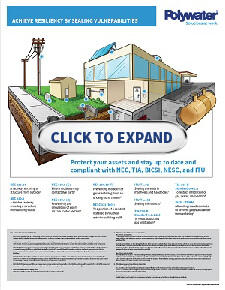Sealing Conduits for Resilient Electrical and Telecommunication Systems
Natural disasters such as hurricanes, cyclones, tsunamis, floods, tornados, and bushfires are examples of extreme weather that wreak havoc on people’s lives, homes, and businesses and impose serious consequences on society.
Key Takeaways
• Examples of natural events that resulted in damage to critical system components, with emphasis on those causing severe flooding
• Mitigation strategies that inspire investment in system resilience projects and are designed to decrease damage and increase critical asset durability
• Suggested technologies and best practices—including an infographic that highlights key industry standards and codes—for sealing conduits against water in a wide range of field scenarios.
• Variables to consider when selecting project-based sealant technology with checklists and questions to help guide decisions.
A mission-critical system or service is indispensable to a functioning community, the economy, and public safety. If the system or service fails or is disrupted due to power outage or damage, commerce and community life can be severely compromised or completely halted. Electrical grids and communication networks are at risk worldwide. Global demand for electrical power and data bandwidth is growing at an increasing pace. As demand increases, potential damage and risk to infrastructure also increases. In many countries, aging assets and unreliable funding further plague these systems’ operational integrity. This paper focuses on how natural disasters compromise mission-critical assets in electrical and communication systems, and how strategies are developed to reduce the risk. Any strategy must begin with collaboration among key stakeholders, such as communities, utilities, and government agencies, and depends on commitments to include system resilience projects in annual operational plans and budgets.
Natural disasters such as hurricanes, cyclones, tsunamis, floods, tornados, and bushfires are examples of extreme weather that wreak havoc on people’s lives, homes, and businesses and impose serious consequences on society. Consumers are typically unaware of behind-the-scenes work required to provide reliable power and digital access, but outages bring instant and unwanted focus.
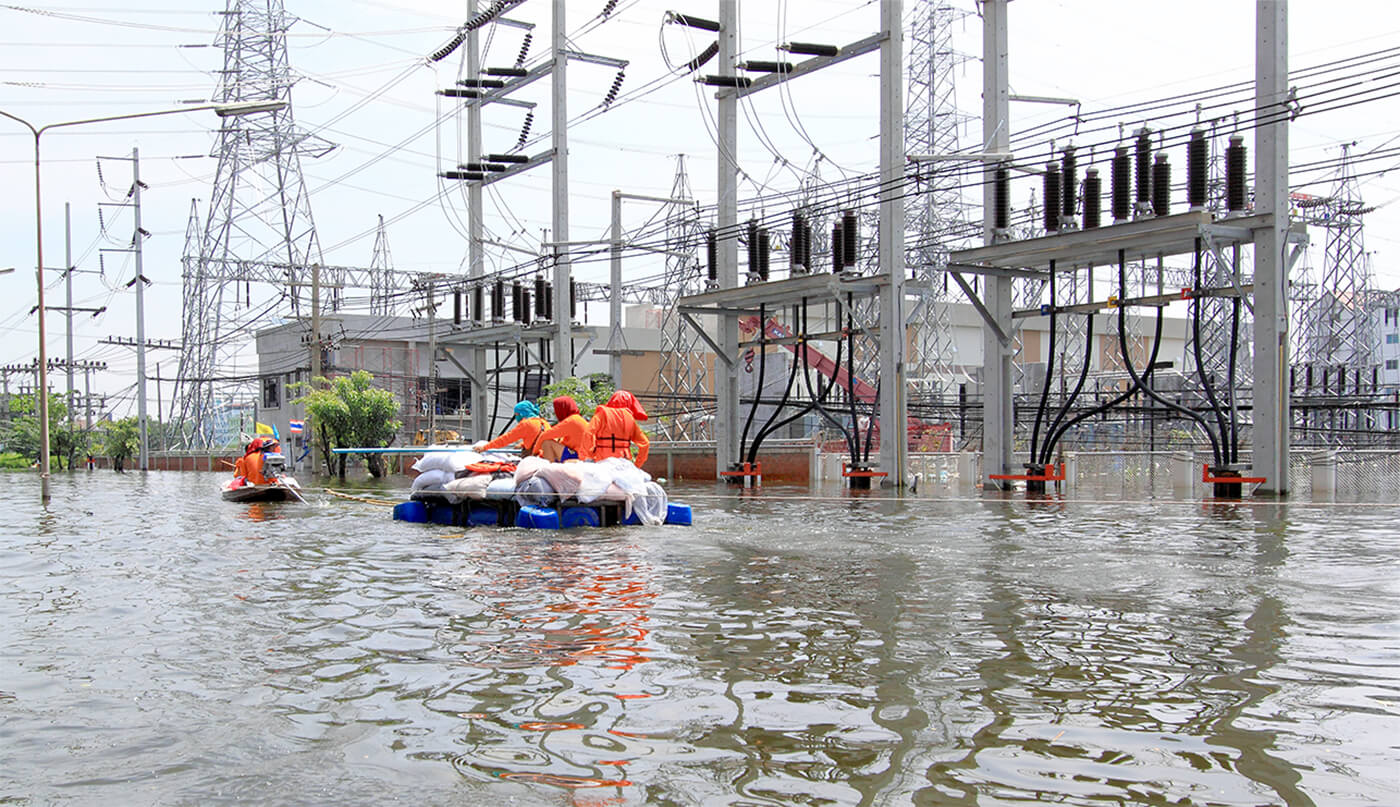
Severe weather events are increasing the need to seal out water
More frequent, intense, and costly weather events are forecast. According to the authors of the Fourth National Climate Assessment, released in late 2018 by the U.S. Global Change Research Program, “extreme events are expected to increasingly disrupt and damage critical infrastructure and property, labor productivity, and the vitality of our communities.” They describe the stresses on infrastructure resulting from heavy rainfall, flooding, extreme heat, drought, and bushfires. The impact on energy and communication systems is acute, ranging from frequent and extended power outages to expensive restoration or system replacement. Such repairs are especially important after flooding causes water penetration in system components. (USGCRP2018)
| Related Content: Understanding and Mitigating Manhole Explosions: An Interview with Stuart Hanebuth |
Impact on U.S. electrical and communication systems
Between 2012 and 2019, the U.S. experienced multiple weather-related events resulting in billions of dollars in damages, the loss of thousands of lives, and lengthy disruptions in service. (CCES 2020) (Smith 2020) According to the U.S. Department of Energy (DOE), 680 power outages between 2003 and 2012 were caused by weather. Each outage affected at least 50,000 customers and seriously disrupted operations for businesses and residences. (Richard 2018) The combination of severe weather and aging infrastructure typically results in even higher expenses for utilities. The cost of a single storm can range from $500,000 to over $1 billion, depending on the number of customers without power. (Richard 2018) Power outages also cause downtime in digital networks, which average $140,000 to $540,000 in losses per hour, depending on the business. (Lerner 2014)
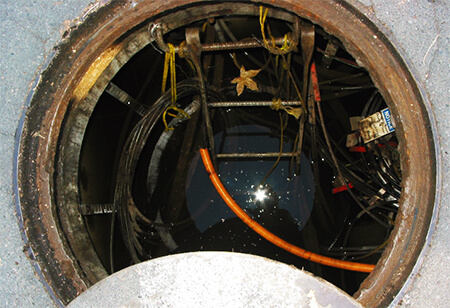
The DOE determined that flooding affected a significant number of power plants: (Brody 2020)
- Hurricane Irene caused flooding of 44 power plants,
- Hurricane Sandy flooding affected 69 power plants, and
- Hurricane Harvey damaged or destroyed more than 6,200 distribution poles and 850 transmission structures. Many power plants are deliberately sited near shore for convenient access to water. Nine U.S. nuclear power plants are sited within two miles of the ocean. (Brody 2020)
Severe weather impact on electrical systems is a global issue
Throughout the world, severe weather events have been increasing with alarming consequences.
Australia
According to modeling conducted by Insurance Australia Group (IAG) and National Centre for Atmospheric Research (NCAR) in Boulder, Colorado, USA during the 2015 to 2025 time period, Australia will experience a 10% increase in the number of the most intense cyclones. These storms are increasing in severity with wind speeds up to 225-279 kilometers per hour (140-173 mph) and maintaining their intensity over land. (Thompson 2020)
European Union
Between 1980 and 2017, extreme weather such as floods, droughts, and heatwaves caused serious economic losses and led to the death of thousands. (EURACTIV 2020)
United Kingdom
In February 2020, the UK experienced extensive river flooding from multiple storms, causing record-breaking rainfall on ground already saturated from previous rains. Flooding affected several regions in England, Wales, Northern Ireland, and Scotland. (Cruse 2020)
Some key extreme water events are highlighted in a world map.
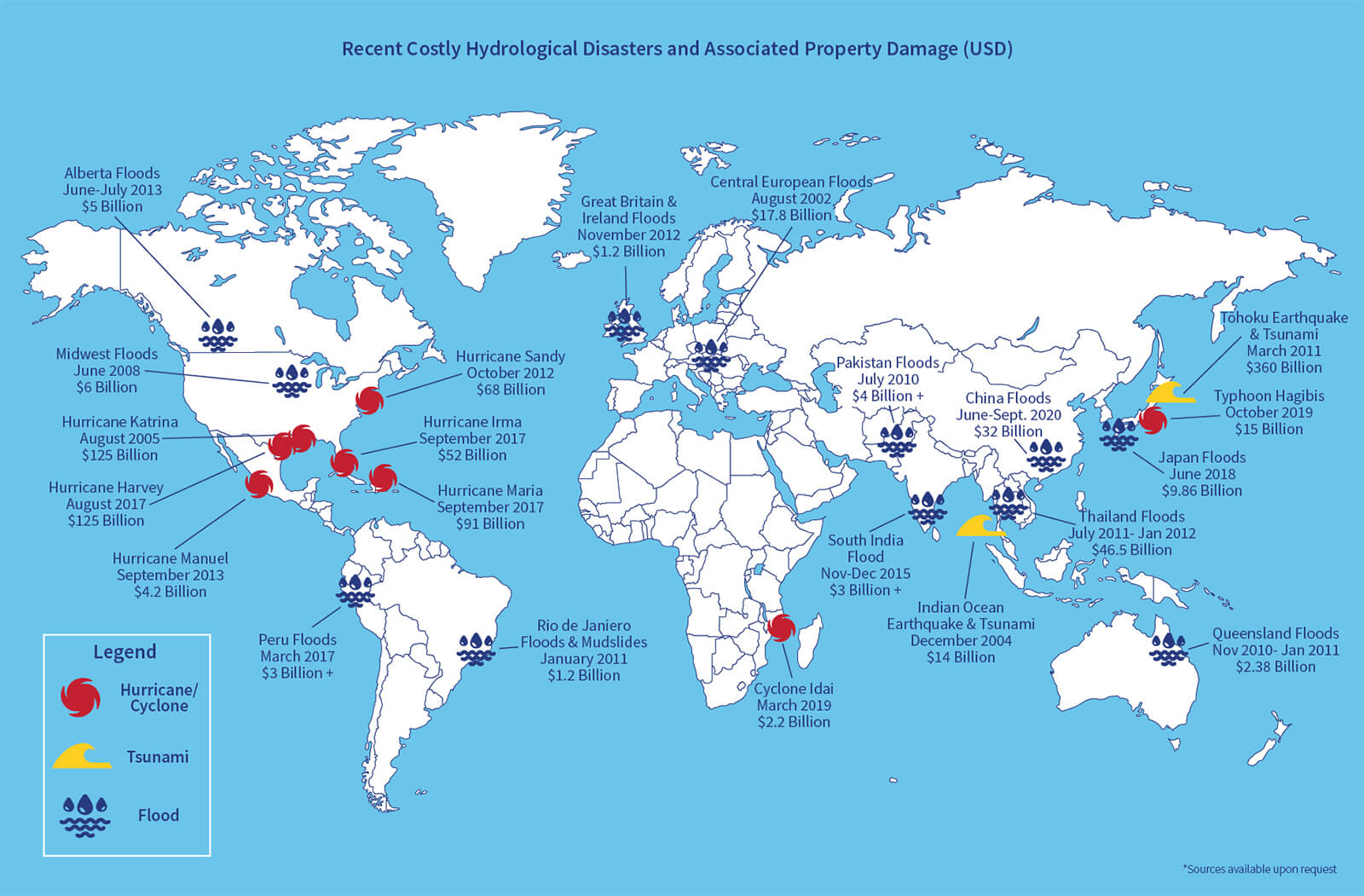
System hardening for greater resilience
The terms “system hardening,” “natural disaster preparedness,” and “resilience” refer to projects aimed at ensuring infrastructure is more resilient to extreme flooding, wind, fire, and other threats. (Richard 2018) The choice of storm hardening methods depends on a variety of factors and requirements. Ideally, utilities and communities work in partnership to create cost-effective plans that provide optimal asset protection in severe weather events, ultimately safeguarding infrastructure, the economy, and people.
| Related Content: Is Meeting a Standard Enough?—An Examination of Duct Sealing Code Compliance. |
The system hardening payoff
As weather volatility increases its impact on power systems and assets, budgeting for measures and products that enhance resilience must be augmented. There is a payoff to consider: the vicious cycle of costly annual repairs, service disruptions, and downtime can be mitigated with research and investment in technologies that reliably protect systems during extreme weather events, especially water events.
A World Bank sector study on improving power resilience to natural hazards argues in favor of the global need for system hardening investments in both new and existing power infrastructure. To aid in determining the level of investment required, the authors link three natural hazards with various infrastructure types and the probability of damage from each hazard. Estimating the probability of damage is useful for deciding where to target system hardening investments, a rising priority among public and private stakeholders responsible for power generation and infrastructure. (Nicolas et al, 2019)
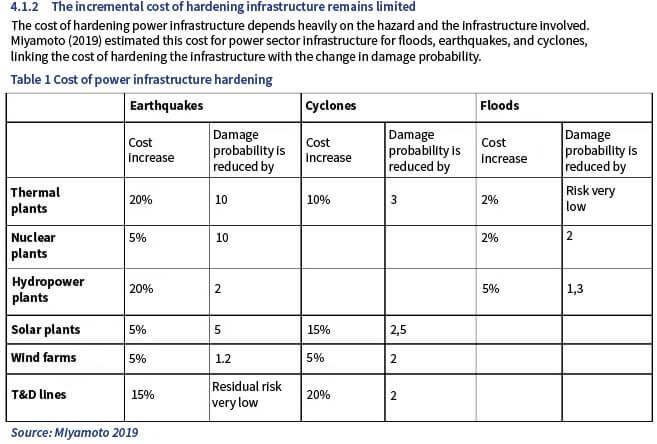
To better understand the economics of storm-hardening projects in the U.S., McKinsey & Company, a global management consulting firm, examined the financial records of ten large power utilities in eight states with densely populated coastlines where hurricanes are common and costly: Alabama, Florida, Georgia, Louisiana, North Carolina, New Jersey, South Carolina, and Texas. (Brody 2020)
First, an analysis was performed about recent costs due to storm damage and projected costs for 2050, estimating that:
- A typical utility experienced $1.4 billion in costs due to storm damage and lost revenue from outages over a 20-year period,
- Based on approximate projections for extreme weather events in the future, calculations showed that by 2050, storm damage and outage costs will increase by 23% (a conservative estimate), and
- The financial consequences by 2050 were estimated to total $1.7 billion in costs per utility.
The study then estimated costs for improving the resilience of a typical southeastern U.S. utility to protect its assets during extreme weather events.
- Estimates ranged from $700 million to $1 billion, less than the current average of $1.4 billion for storm damage,
- The local calculation was far less than the projected cost in 2050 of $1.7 billion in storm damage, and
- Projected costs will increase if predicted higher temperatures, heat waves, rising sea levels trend higher, and unknown future events occur.
Global strategies for system hardening
Worldwide, countries are developing plans and projects for greater system resilience.
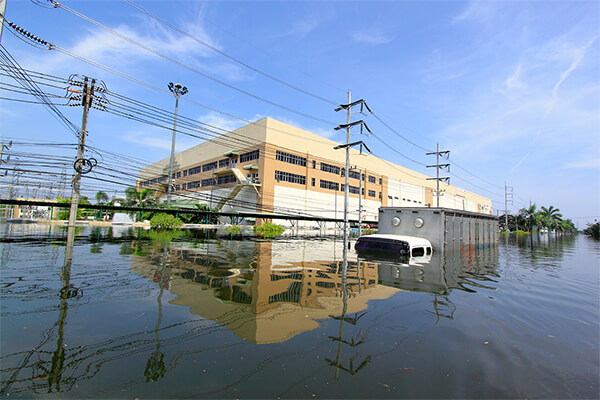
United States
The U.S. Department of Energy (DOE) lists the following recommendations for physical improvements to protect utility infrastructure during natural disasters. (Little 2020)
- Replace vulnerable power poles, especially in coastal areas,
- Bury power lines, especially near mission-critical institutions such as fire and rescue operations, hospitals, data centers, and telecommunications towers,
- Reinforce existing infrastructure,
- Elevate power equipment and create barriers in flood-prone areas; use levees and moats to protect equipment; move equipment to higher floors in urban environments, and
- Use high-tech solutions to limit outages and reduce downtime, including smart meters, automated monitoring, switches, reclosers, sectionalizers, and backup sources of power from microgrids.
Australia
Maintaining power resilience within Australia’s vast interconnected grid requires planning and coordination between public and private entities. Queensland encounters a wide range of extreme weather (severe cyclones/storm surges, floods, and bushfires) that disrupts power generation system wide and serves as an example of how thoughtful partnerships and strategies can mitigate the effects of extreme weather events. Recent strategies include: (Bartlett 2016)
- Establish public-private partnerships that encourage area councils and power companies to proactively ensure equipment and manpower availability for emergency infrastructure repair,
- Plan and report on the impact of severe storms on grid assets, forecast climate and demographic changes, evaluate energy trends, and
- Sponsor system hardening projects to protect aging infrastructure, especially systems susceptible to flooding.
Partnership and planning results in better crisis management
The enhanced planning reduced power and communication outages and helped protect valuable infrastructure assets during natural disasters. During the 2011 Queensland floods, an inundated substation was able to operate throughout the emergency and was restored to full-service levels within a week. A collapsed tower was replaced in two weeks and collapsed power poles were replaced or repaired quickly. The coordinated response reduced power interruptions to less than 0.01% of total power use and enabled rapid restoration of mobile communication services.

Brisbane continues to seal against water
In addition to coordination and planning, system hardening projects are underway to protect aging infrastructure, especially systems susceptible to flooding. In Brisbane, Queensland’s capitol, the city’s major electrical utility is using innovative foam sealing technologies to protect ducted underground cables from the intrusion of water and pests. The sealants can withstand the highwater pressures likely present in the event of flooding similar to that of 2011. Though Brisbane placed most of its electrical infrastructure underground, the city experienced storm surges that pushed water back into the streets through the storm drainage system. This overflowing water also entered electrical ducts and components, which were protected once sealed.
| Related Content: MDI Monitoring on Polywater® Foaming and Non-foaming Urethane Products |
European Union
Extreme weather events are increasing in Europe, emphasizing the need for policy development, better funding, cross-border cooperation, and methods to enhance resilience of critical electrical and digital systems. (Euro Dis Risk Mgt 2020) In 2017, the European Commission published a Science for Policy report by the Joint Research Centre (JRC), its science and knowledge service. The JRC examined the impact of natural disasters on power grid recovery and offered recommendations to guide the EU member countries in policy formation, hazard mitigation, and emergency management of power outages. (JRC 2017)
A summary of the recommendations is listed below:
- Whenever possible during risk assessments, use consistent scenarios across EU policy areas,
- Integrate risk management efforts,
- Build resilience into system design,
- Assess power grid resilience in the event of geomagnetic storms, which are major, temporary disturbances of Earth’s magnetosphere and pose damage to the grid,
- Develop, implement, maintain, and continuously update outage management plans,
- Stockpile key assets and equipment to facilitate timely repair or replacement of damaged items,
- Ensure back-up capabilities during disasters, and
- Make power restoration to critical electricity users such as hospitals a top priority.
The role of proper seals in system hardening projects
Water penetration causes costly damage that is difficult to repair. Whether a project is new construction or an upgrade, prevention of water penetration is essential. Durable sealing technologies provide powerful duct protection and play a vital role in a comprehensive system hardening program. Implementation of sealing technologies is a site-by-site activity that uses varied applications to achieve the goal: reducing or eliminating water penetration. As the frequency of water events increases, the permanent installation of sealing technologies pays for itself by saving on the cost of vital equipment restoration. The following section on sealant selection outlines a process to help match the appropriate sealant to a specific project providing long-term benefits.
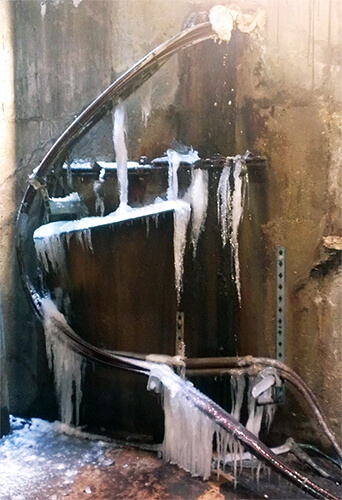
Determining what needs protection
Proper sealing starts with an analysis of the complete project, its function and location, its requirements for success, and other variables. Setting clear objectives is important. Only then can the appropriate sealing technology be identified. What needs protection? Is it mission-critical, or is there system redundancy? What is the asset value? Is it exposed to outdoor elements or below grade? Is the goal to prevent moisture or repel a flood? Is physical asset degradation a concern? Each situation is unique and there is no one solution. Many factors must be considered in these situational analyses.
Defining the situation
System hardening poses a variety of situations that require different sealing technologies. For example, cable raceways, wall penetrations, and wall cracks are scenarios that present a variety of materials, geometries, and other factors. It is common for a conduit to pass through the outside wall of a building or enclosure. Such conduits are often underground, so water ingress is problematic. A thorough examination of the conditions raises many questions:
- Is the area hard to reach or partially obstructed?
- What materials are to be sealed? Plastic, metal, and cement are the most common materials.
- What is the condition of the conduit and the wall? Is this a new installation or an older existing entry?
- What kind of surface contamination can be detected?
- How much of the conduit is filled with cable, innerduct, or pipe?
- What are the physical dimensions of the space to be sealed? Is the installation horizontal or vertical?
- Are there specific codes or standards that the seal must meet? For example, in some situations, UL recognition may be required.
With so many questions, one gets the impression that seal technology selection is impossibly complex. However, such questions simplify selection. The combination of conditions present in the analysis quickly eliminates sealant candidates and narrows the search. Ensuring that needs are clearly defined allows the tailoring of solutions to meet the specific conditions. There is a solution to most situations.
In many cases, water ingress may be evident. In fact, water may be actively flowing into the enclosure or building. Specialty sealing solutions can be installed while the leak is active. What pressure must the seal withstand? Measured as waterhead height, this is a key factor in selecting sealant technology. Under normal conditions, the seal may only need to withstand a few centimeters of waterhead. During a water event, however, waterhead resistance requirements may rise to as high as 80 feet (25 meters).The requirements of a water event solution will define which sealant technology to use.
Planning and careful surface preparation are keys to a successful seal. Existing entries with aging materials pose a challenge. Metal rusts, concrete degrades, and plastic becomes brittle. Oxidation, grime, scum, and oil should be removed prior to seal installation. New installations can present problems if materials were damaged during construction. Always inspect the area surrounding the seal and make repairs if necessary.
Determining life expectancy and environmental compatibility
The expected lifetime of a seal depends on numerous requirements and various factors:
- Seals can be engineered as permanent or temporary. Sometimes a seal is needed for a specific time interval. More commonly, the seal is intended to last the lifetime of the material receiving the seal.
- Before cable is run, conduits are often capped as a temporary seal. The cap can be removed at the time of cable pulling, when a more permanent seal is installed.
- Seals can be engineered to meet only the current configuration of the opening and the cables, innerducts, or pipes passing through. Other seals are engineered to be re-enterable, allowing future changes to the configuration.
- Seals must be compatible with the installation environment. The presence of water, salt, corrosive material, or solvents will dictate seal technologies. Additionally, the expected working temperature is important.
- Seal locations subject to vibration or flexing may require a specific seal type.
Testing to verify seal strength and integrity
Seals are installed to meet specific requirements. The varied requirements establish a road map to the proper choice of sealing technology.
Critical infrastructure assets are often placed underground for protection from falling trees, lightning strikes, and other weather events. These include transformers and sewage pumping stations. The water column pressures generated in such installations often exceed 6 to 10 feet (2 to 3 meters) and can reach much higher peak pressures. Duct seals must resist these pressures to maintain the functionality of underground power cable installations.
Rigorous testing to prevent failure due to water pressure
We can pretest sealants designed to hold water column pressures in the laboratory by sealing conduits, adding waterhead pressure, and checking for failure. Similar testing is done with pressurized air or another gas as needed. Chemical resistance is tested by subjecting seal materials to various chemical agents and measuring any changes. This testing should be conducted at the expected working temperatures.
| Related Content: Duct Seals Prevent Ruinous Water Damage |
Blocking water by choosing a reliable sealing technology
Flooding causes more economic damage than all other types of weather events. Sealing underground networks from flooding is an effective means of protecting valuable electrical and communication assets. High winds, heavy rainfall, and storm surges generated by hurricanes and cyclones combine to produce large volumes of floodwater that degrade the operational capacity of a system. This is especially true in urban areas where underground networks are susceptible to flooding. Protecting these valuable networks from water penetration is a top priority.
Sealing technology protects infrastructure from flooding and comes in many forms. There are advantages and disadvantages among sealant choices, which we explain below:
- Low-cost, mastic putty is an age-old sealant with limited sealing performance. It does not hold water or air pressure. It is susceptible to sagging at higher temperatures and deforms when cables are moved.
- Cement/mortar, grout, and Plaster of Paris are also historical sealants. The lack of available water for onsite mixing makes them inconvenient. Their extended reaction or setting times can further complicate installation.
- Pre-engineered mechanical seals perform well. They resist high water head and gas pressure, are easily removed, and help support cables; but they can be challenging in complex cable or high-conduit-fill configurations.
- Two-part, closed-cell expanding foam is an excellent choice. High-performance foams readily adapt to varied configurations, remove easily for future access, and offer robust chemical resistance. Foam selection is key, as the chemistry varies.
- Epoxy mortar can be used as a sealant or coating, particularly for cracks and small imperfections. It has strong water and chemical resistance. Epoxies are typically high in viscosity and require trowel application.
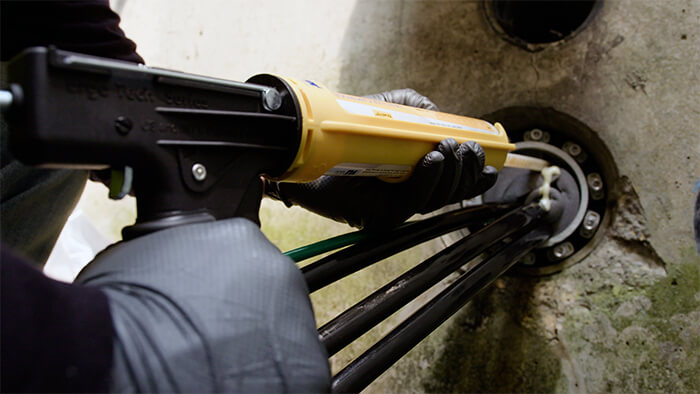
Making sealant technologies work for you
Proper installation is, of course, vital for success when sealing. An important step in any seal deployment is surface preparation. Every seal technology works better if the site is cleaned and free of contaminants. Matching the requirements of the seal to the capabilities of available sealants increases the probability of success.
Summary
Severe weather events challenge electrical and telecommunication systems, often resulting in serious adverse consequences to people, property, and economies. In this paper, we explored the following:
- How extreme weather affected communities around the world, necessitating preventative system resilience measures. Hurricanes, cyclones, tsunamis, river flooding, and other natural disasters are particularly dangerous and often result in water infiltrating electrical and digital systems,
- Described ways to protect these systems against water ingress with best practices, including the optimal choice of sealant and proper application techniques,
- Provided a road map of the many variables that enhance effective decision making, and
- Outlined the payoff from investing in system resilience, which includes the use of multiple sealing technologies, prevention of costly repairs, service disruption, and downtime in electrical and telecommunication systems.
Have any questions?
References
Bartlett S. Natural Disaster Management “Down-under” 3Ps. IEEE Power & Energy Society, 2016.
Brody S, Rogers M, Siccardo G. Why, and how, utilities should start to manage climate-change risk. IN: Climate-change Adaptation for US Utilities, McKinsey & Company, April 2020.
CCES. Center for Climate and Energy Solutions. Extreme Weather and Climate Change. https://www.c2es.org/content/extreme-weather-and-climate-change/. June 2020.
Cruse E. Damage from storms Dennis and Ciara set to cost more than ₤360 million. The Evening Standard, March 7, 2020.
EURACTIV. Extreme weather cost Europe nearly half a trillion euros so far. Euractiv.com. June 2020.
European Disaster Risk Management. European Civil Protection and Humanitarian Aid Operations, December 2020.
JRC Science for Policy Report. Power grid recovery after natural hazard impact. 2017.
Lerner A. The cost of downtime. Gartner Blog Network, https://blogs.gartner.com/andrew-lerner/2014/07/16/the-cost-of-downtime/, June 2014.
Little A. Storm Hardening101: What Utilities Should Consider and Why. Alden Systems, Inc. April 2020. https://info.aldensys.com/joint-use/storm-hardening-101-what-utilities-should-consider-and-why.
Miyamoto International. Overview of Engineering Options for Increasing Infrastructure Resilience. Final Report. World Bank Group, 2019.
Nicolas CM, Rentschler J, Potter van Loon A, et al. Stronger Power: Improving Power Sector Resilience to Natural Hazards (English). Washington, D.C. World Bank Group, 2019. https://documents.worldbank.org/en/publication/documents-reports/documentdetail/200771560790885170/stronger-power-improving-power-sector-resilience-to-natural-hazards
Richard, J. Grid Hardening and Resiliency. Leidos Inc., November 2018. https://docplayer.net/85747455-Grid-hardening-and-resiliency-by-alyson-rossini-and-jeffrey-richard.html
Smith, AB. 2010-2019: A landmark decade of U.S. billion-dollar weather and climate disasters. NOAA Climate.gov. https://www.climate.gov/author/adam-b-smith. January 2020.
Thompson, Geoff. Severe cyclones are spreading further south and it could mean tens of billions in damages. ABC News, March 2020. https://www.abc.net.au/news/2020-03-06/cyclones-spreading-south-could-cause-tens-of-billions-in-damage/12020218.
USGCRP. Impacts, Risks, and Adaptation in the United States: Fourth National Climate Assessment, Volume II. Reidmiller, D.R., et al., eds. U.S. Global Change Research Program, 2018.
